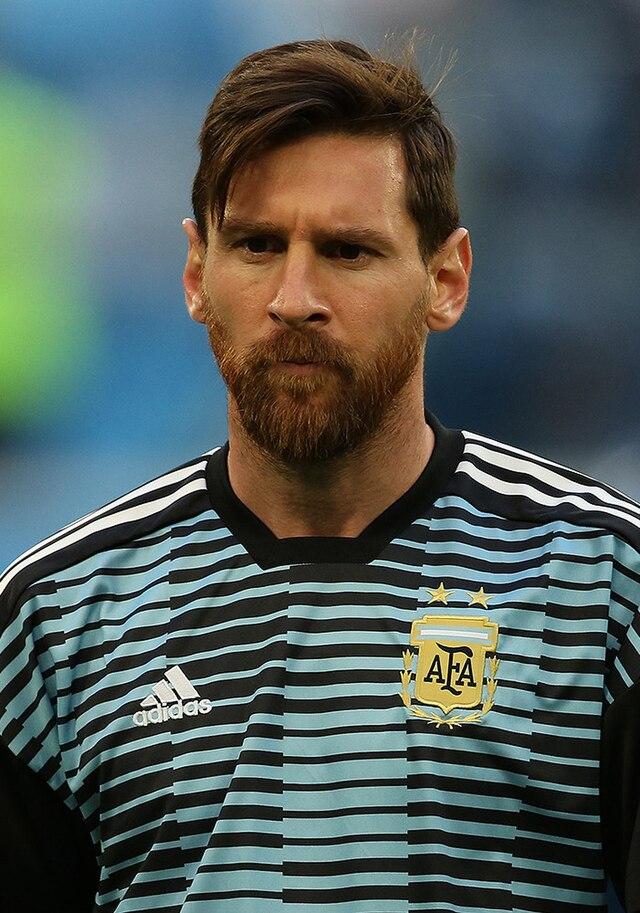in a significant shift within the landscape of American sports culture, soccer superstar Lionel Messi has emerged as the most popular athlete in the United States, supplanting basketball icon Michael Jordan.This progress, highlighted in a recent article by Sports Illustrated, underscores the growing influence of soccer in a nation traditionally dominated by basketball, football, and baseball. Messi’s arrival in Major League Soccer (MLS) and his undeniable skill on the field have captivated fans across the country, igniting a new fervor for the global game. As we explore the factors contributing to messi’s ascendance in popularity and the implications for the sports market, it becomes clear that this transition marks a pivotal moment in the evolution of American sports fandom.
Lionel Messi’s Impact on American Sports Culture
The arrival of Lionel Messi in Major League Soccer (MLS) has transformed American sports culture in ways that reverberate far beyond the confines of the soccer pitch. His immediate impact was palpable not only in stadium attendance and merchandise sales but also in the way soccer is perceived in a country predominantly dominated by football, basketball, and baseball. Messi’s magnetic presence has captured the attention of casual and devoted sports fans alike, drawing in individuals who may have previously overlooked soccer.Drawing from rich social media engagements,and remarkable television ratings,the surge of interest signifies a pivotal shift in the American sports landscape.
As Messi’s influence grows, so too dose the conversation concerning the nature of American athletic icons. Unlike traditional sports heroes like Michael Jordan, who represented dominance in a specific sport, Messi embodies a truly global athletic persona capable of bridging the worlds of sports and culture. This is evident in various ways, including:
- Increased Youth participation: Soccer academies and youth leagues have seen a surge in registrations, reflecting the excitement Messi brings to the sport.
- Global Reach: Messi’s fame transcends borders, making soccer a more widely discussed topic among American audiences.
- Commercial Collaborations: Brands are leveraging Messi’s image, leading to collaborative campaigns that merge sports and popular culture.
To further illustrate the impact Messi has on sports culture, the following table highlights key metrics comparing his popularity with that of Michael Jordan:
| Metric | Lionel Messi | Michael Jordan |
|---|---|---|
| Social Media Followers | Over 500 million | Over 10 million |
| Average Attendance (MLS) | 30,000+ per match | N/A |
| Merchandise Sales | 1 million jerseys sold in weeks | 300,000 jerseys sold in a year post-retirement |
Comparing Popularity Metrics Between Messi and Jordan
In recent years, the popularity dynamics between Lionel Messi and Michael Jordan have shifted dramatically, highlighting the impact of globalization and the rise of social media. Messi’s ascent in the U.S. sports landscape has been primarily fueled by the growing interest in soccer, particularly following his transfer to Inter Miami.His engagement on social media platforms has skyrocketed, boasting a following that now rivals some of the biggest names in sports. Key metrics that illustrate this shift include:
- Social Media Followers: Messi has amassed over 500 million followers on Instagram, whereas Jordan’s reach is around 200 million.
- brand Endorsements: Messi’s partnerships with brands like Adidas and Budweiser have substantially impacted his marketability, showing a contemporary approach to athlete branding.
- Engagement Levels: Posts featuring Messi typically receive millions of likes and comments, reflecting his widespread appeal.
To put these figures into perspective, the table below summarizes key metrics for both athletes, providing a clear comparison of their popularity:
| Athlete | instagram followers (millions) | Brand Endorsements | Average Engagement (likes per post) |
|---|---|---|---|
| Lionel Messi | 500+ | Adidas, Budweiser, Pepsi | 5 million |
| michael Jordan | 200+ | Nike, Gatorade, Hanes | 1 million |
These statistics reveal not only the transition in athlete popularity but also the different eras in which they rose to fame. While Jordan dominated the 90s with his unrivaled charisma and iconic moments in basketball,Messi’s influence is reflected in a more globalized and digital-savvy audience,making his popularity not just a testament to his skill on the field,but also to his ability to connect with fans worldwide.
The Role of Social Media in Shaping Athlete Fame
In today’s digital age, social media platforms play a critical role in elevating an athlete’s profile and influence. The rise of athletes like Lionel Messi in the American sports landscape underscores how platforms such as Instagram, Twitter, and TikTok can significantly alter public perception and fan engagement. Utilizing these outlets, athletes can share personal stories, training routines, and behind-the-scenes content that fosters a sense of connection with fans. The immediacy of social media allows athletes to respond to trends and comments in real-time, effectively cultivating a personal brand that resonates across demographics.
The metrics of fame have shifted dramatically, with social media following serving as a key indicator of popularity. Metrics such as engagement rates, follower counts, and shareable content are now as valuable as traditional sales figures or endorsement deals. This conversion is evident in the following ways:
- Brand Endorsements: Athletes leverage their follower numbers to attract lucrative sponsorships, often influencing the marketing strategies of brands.
- Fan Interaction: Social media allows for a two-way dialog, granting fans direct access to their idols and thereby increasing loyalty and enthusiasm.
- global Reach: With platforms accessible around the world,athletes can build a fan base that extends beyond local markets.
| Athlete | Followers (millions) | Primary Platform |
|---|---|---|
| Lionel Messi | 500 | |
| Michael Jordan | 25 | |
| LeBron James | 100 |
Future Predictions for Messi’s Legacy in the United States
As Lionel Messi continues to elevate the profile of soccer in the United States, his influence may reshape American sports culture in unprecedented ways. With his arrival in MLS, Messi has not only drawn media attention but has also sparked public interest in soccer, a sport that has historically played second fiddle to football, basketball, and baseball. His philanthropic efforts, combined with his on-field genius, set the stage for a legacy that transcends athletic achievement. Some potential impacts on Messi’s legacy include:
- Increased Youth Participation: More kids in the U.S. may take up soccer,inspired by Messi’s skill and sportsmanship.
- Growth of Women’s Soccer: Messi’s popularity could benefit women’s leagues, encouraging more inclusivity in sports.
- Cultural Integration: The blending of soccer fandom with American sports traditions could create a unique fan experience.
In the coming years, we may also see a shift in how American sports endorsements are structured, with messi’s global brand offering lucrative partnerships for both emerging and established companies.Already, he has collaborated with several high-profile brands, and this trend is expected to grow, driving revenue streams that surpass traditional areas of sports marketing. Let‚Äôs explore how Messi‚Äôs impact might play out:
| Year | Key Milestone | Potential Impact |
|---|---|---|
| 2024 | MLS Championship Victory | Boost in league popularity and viewership. |
| 2025 | Major Brand Endorsement Deals | Revolutionizing athlete marketing strategies. |
| 2026 | World Cup in the U.S. | Soccer officially recognized as a staple in American sports culture. |
In Conclusion
Lionel Messi’s ascendance to the title of the most popular athlete in the United States marks a significant cultural shift in American sports fandom. His exceptional skills, global appeal, and recent triumphs with Inter Miami have captivated a nation long dominated by the legacy of Michael Jordan. As both athletes symbolize excellence in their respective sports, Messi’s rise underscores the growing influence of soccer in the U.S. landscape. Sports fans are increasingly recognizing the beauty and excitement of the stunning game, and Messi’s arrival has certainly accelerated this transformation. As we move forward,it will be intriguing to see how this newfound popularity shapes the future of soccer in America and the rivalries that come with it.Sports enthusiasts can expect an exciting new chapter in the world of sports, where different legends and emerging stars will continue to redefine the parameters of athletic greatness and fan engagement.





